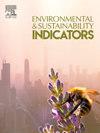架起商业与生物多样性的桥梁:生物多样性评估工具分析
IF 5.4
Q1 ENVIRONMENTAL SCIENCES
引用次数: 0
摘要
企业可持续发展管理是一个日益兴起的话题。因此,企业必须评估其活动对生物多样性的影响,并制定策略来减少其对生物多样性的负面影响。本文分析了由科学目标网络(SBTN)提出的45种可供公司使用的生物多样性评估工具。分析了这些工具的以下特征:工具中使用的方法、涵盖的生物多样性主题、压力和状态生物多样性方面、技能要求、可访问性、用户界面、地图集成、开发人员群体和评估范围,然后使用多维尺度(MDS)进行比较,以确定工具的相似性(非相似性)。通过定性分析和MDS,我们将生物多样性评估的软件和网络应用程序、生命周期评估(LCA)工具、多区域投入产出(MRIO)分析工具、基于地理信息系统(GIS)的工具、指数计算方法和生物多样性相关数据库划分为6个主要类别。此外,工具中与生物多样性相关的指标在范围、数据和评价方法上存在较大差异。鉴于方法方法的多样性,本研究有助于企业获得一个概述,随后选择合适的生物多样性评估方法。该研究还提出了一个木材加工公司应用这些工具的案例研究,并为采掘业提出了一种通用的生物多样性评估方法。未来的研究应该进一步探索这些工具的局限性,特别是在不同行业部门的实际应用方面。在进一步开发工具的过程中,还应将改善生物多样性状况的具体行动指示纳入这些工具。本文章由计算机程序翻译,如有差异,请以英文原文为准。
Bridging business and biodiversity: An analysis of biodiversity assessment tools
Corporate sustainability management is an increasingly emerging topic. Consequently, it is important for businesses to evaluate the impact of their activities on biodiversity and develop strategies to reduce their negative biodiversity impacts. This paper analyses 45 biodiversity assessment tools, proposed by the Science Based Targets Network (SBTN), that can be used by companies. The tools were analysed for the following characteristics: methods used in the tools, biodiversity topics covered, pressure and state biodiversity aspects, skill requirements, accessibility, user interface, integration of a map, developer group and assessment scope, and then compared using multidimensional scaling (MDS) to identify (dis-)similarities of the tools. Using qualitative analysis and MDS, we identified six main groups: software and web applications for biodiversity assessment, Life Cycle Assessment (LCA) tools, Multi-Regional Input-Output (MRIO) analysis tools, Geographic Information System (GIS)-based tools, index calculation methods and biodiversity related data repositories. Furthermore, the biodiversity related indicators in the tools differ greatly by scope, data and evaluation method. In view of the variety of methodological approaches, this study helps businesses to get an overview to subsequently select suitable biodiversity assessment methods. The study also presents a case study on the application of the tools for a wood-processing company and proposes a generalised biodiversity assessment approach for extractive industries. Future research should further explore the limitations of these tools, particularly regarding their practical application by different industry sectors. In the course of further tool development, concrete instructions for action to improve the state of biodiversity should also be integrated in the tools.
求助全文
通过发布文献求助,成功后即可免费获取论文全文。
去求助
来源期刊

Environmental and Sustainability Indicators
Environmental Science-Environmental Science (miscellaneous)
CiteScore
7.80
自引率
2.30%
发文量
49
审稿时长
57 days
 求助内容:
求助内容: 应助结果提醒方式:
应助结果提醒方式:


